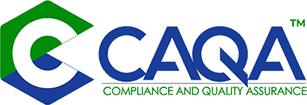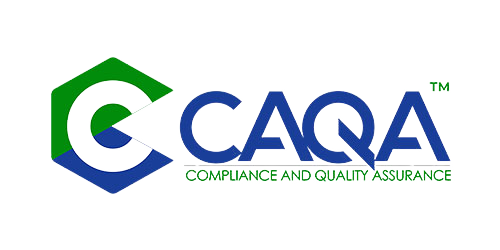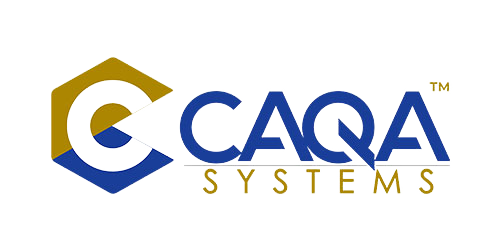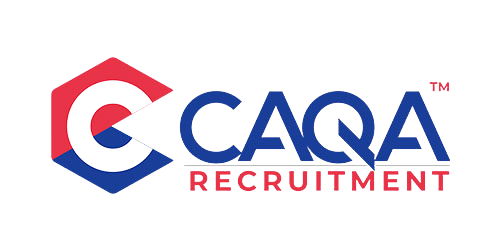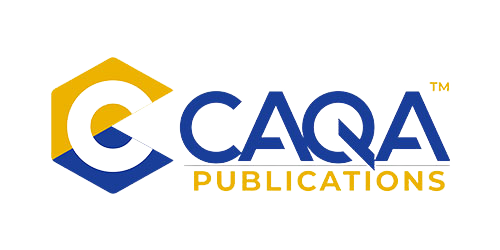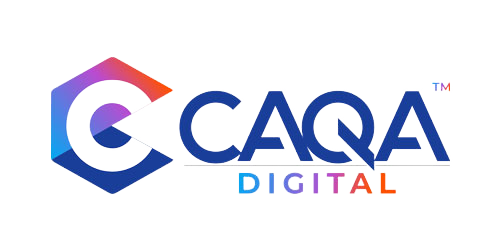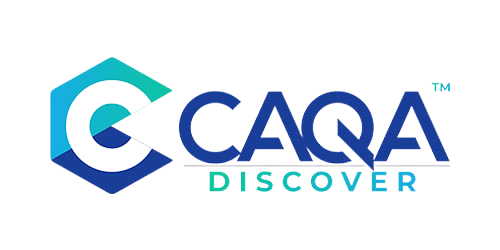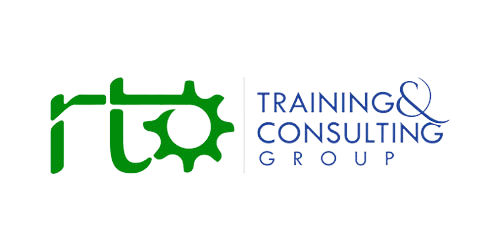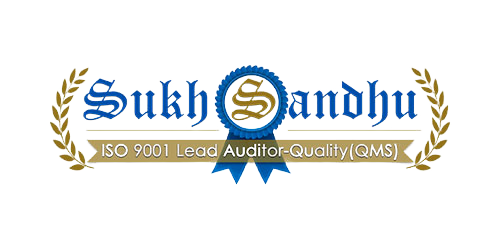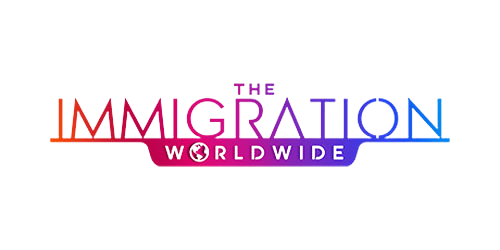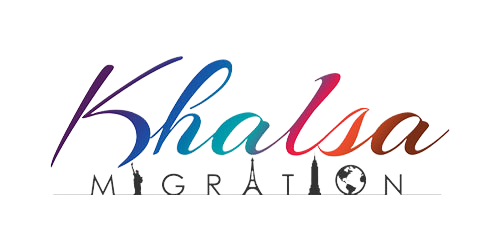Australia’s Vocational Education and Training (VET) sector stands on the threshold of a significant transformation, poised to implement newly revised Standards for Registered Training Organisations on July 1, 2025. This sweeping regulatory shift has energised discussions among providers, employers, policymakers, and learners alike. Most see the changes as a concerted effort to reinforce quality, highlight real-world outcomes, and respond more adeptly to industry demands. Others, particularly smaller or more resource-constrained providers, worry about the pace of compliance and the transition’s immediate impact. Nonetheless, there is a widespread conviction that the updated standards will usher in a more dynamic, innovative, and trusted VET sector.
This article offers an in-depth exploration of the revised framework, outlining how the new Standards redefine relationships between government agencies, training providers, and industry partners. It also explains key points of contention, underscores the role of continuous improvement, and draws attention to pressing challenges before the official launch date. Finally, it provides frequently asked questions (FAQs) to help stakeholders interpret the new requirements and prepare for a collaborative new era of vocational education in Australia.
Shifting the Focus: A Paradigm of Quality Assurance
The regulatory changes that take effect in 2025 represent a bold attempt to recalibrate how VET providers in Australia operate. For many years, standards for RTOs have revolved around documenting processes, ensuring staff qualifications, and adhering to essential compliance markers. While these factors remain relevant, the revised Standards place learner outcomes and industry relevance in the foreground of quality assurance.
Under the revised approach, the Standards revolve around three interwoven components:
- Outcome Standards: Moving from process-focused compliance to measuring real-world impact on learners and employers.
- Compliance Requirements: Maintaining stringent obligations but emphasising risk-based oversight, so regulatory resources focus where they are most needed.
- Credential Policy: Offering clearer guidance on qualification issuance, recognition, and the potential for micro-credentials, all while combating credential fraud.
Crucially, regulators and policymakers aim for these pillars to foster an environment in which training providers can adapt quickly to changing market needs, integrate new technologies, and design innovative curricula. The ultimate vision is that learners emerge with skills in high demand, prepared for dynamic workplaces and armed with certifications that carry national and international credibility.
Industry Reactions: A Combination of Optimism and Concern
Widespread Welcome for Outcome-Based Thinking
Many RTO leaders have applauded the transition from checklists to meaningful measurements of success. By zeroing in on learner completion rates, employer satisfaction, and graduates’ workplace performance, the revised Standards reward providers that excel in forging deep ties with industry. Employers, too, have expressed optimism that this approach will produce more capable, job-ready graduates, allowing them to hire with greater confidence.
This renewed focus on outcomes is viewed by some as a chance to innovate. Freed from the minutiae of purely procedural documentation, providers can channel resources into advanced teaching methods, digital learning systems, and robust partnerships with professional bodies. Early adopters foresee a stronger, leaner compliance model that highlights quality and continuous improvement rather than routine checks and paperwork.
Implementation Timelines: A Cause for Anxiety
Despite the enthusiasm, some RTOs—particularly smaller organisations or those serving regional communities—note that they need time to retool internal processes, adopt new technologies, and train personnel. With the new Standards going live on July 1, 2025, a compliance scramble may ensue if support and guidance do not arrive in a timely manner. These providers stress that they are eager to align with best practices but require thorough instructions on how to measure outcomes and present evidence that satisfies revised audit parameters.
Furthermore, not all stakeholders agree on how outcome-based approaches will be interpreted by auditors. Fears persist that open-ended standards could result in varied or even contradictory audit rulings, especially if examples or exemplars are sparse. The Australian Skills Quality Authority (ASQA) will thus play a pivotal role in dispelling confusion, providing consistent guidance, and training its auditors to fairly assess a wide range of evidence indicative of quality learning and positive graduate results.
Exploring the Revised Framework
1. Outcome Standards
The concept of Outcome Standards underpins the regulatory overhaul. In essence, RTOs must now illustrate how their programs benefit learners, workplaces, and broader economic or social contexts. Key indicators might include completion rates, learner satisfaction surveys, industry validation of skill sets, and the tangible employability of graduates. Although compliance documentation remains necessary, the emphasis is firmly on practical results.
Adopting an outcomes-based model aligns with global trends in educational evaluation, where data on graduate progression and employer endorsement are steadily replacing older methods of verifying compliance. Consequently, some RTOs may revisit their entire data ecosystem. They will need robust ways to track graduates, collect feedback from employers, and identify whether training leads to promotions, job retention, or new professional opportunities.
Nonetheless, defining and measuring outcomes is not without complications. Industry requirements vary across regions and sectors, so a one-size-fits-all formula for success is elusive. The revised Standards encourage providers to tailor metrics for their unique markets while adhering to essential national guidelines. This customisation demands thoughtful planning and consultation. RTOs that plan actively for this realignment can transform their relationships with industries, forging deeper partnerships and ensuring training always meets real-time workforce needs.
2. Compliance Requirements
Although the revised Standards pivot toward outcomes, compliance remains a critical backbone. However, the spirit of the new model is different. Historically, RTOs often underwent lengthy audits examining evidence such as staff qualification documents, policy manuals, and compliance checklists. In contrast, the revised approach leans on a risk-based strategy, directing regulators’ focus toward providers with a record of repeated shortcomings, unresolved student complaints, or signs of insufficient governance.
Well-performing RTOs with a history of consistent compliance and positive learner outcomes may see a reduction in mandatory audits or an easing of administrative burdens. This balanced approach aims to:
- Support strong RTOs, freeing them to refine their programs and invest in creativity
- Allocate audit resources more effectively, ensuring issues are addressed at RTOs that genuinely need intervention
- Foster a culture of self-assurance, pushing RTOs to self-critique continuously rather than awaiting external directives
A further hallmark of the revised Compliance Requirements is transparency. The shift to outcome-based metrics necessitates that RTOs communicate openly about how they gather data and rectify identified weaknesses. A robust internal governance structure and a thorough approach to risk management can mitigate friction during audits, as providers can swiftly demonstrate how they track and resolve potential quality gaps.
3. Credential Policy
Another cornerstone of the new Standards is the refined Credential Policy, focusing on how qualifications are validated, recorded, and recognised by employers and the broader community. The updated policy formalises the role of digital certificates, micro-credentials, and data-driven verification platforms, reflecting an era where authenticity and security of credentials hold increasing importance.
Providers are encouraged to:
- Implement secure systems, such as blockchain or uniquely coded certificates, to prevent fraudulent duplication
- Integrate micro-credentials that allow learners to gain targeted skill sets in short timeframes—ideal for fast-evolving or niche industries
- Coordinate with employers to ensure that newly issued credentials accurately describe the competencies achieved
This structured approach modernises how RTOs award qualifications, offering more granular evidence of learner achievement. Micro-credentials, in particular, are seen as essential for bridging skill gaps quickly, fostering flexible upskilling, and responding to new technologies or processes. While designing and administering such credentials requires additional planning, it resonates strongly with the outcome orientation, as micro-credentials must align with distinct, verifiable abilities.
Preparing for the Transition
1. Familiarisation with Outcome-Based Standards
The first order of business for many RTOs is to upgrade their understanding of what “outcome-based” truly means. Managers, trainers, and compliance officers might need to reevaluate key performance indicators. Instead of focusing primarily on the volume of enrollments or the frequency of administrative tasks completed on time, RTOs can track learner progress, graduation rates, post-training employment, and employer endorsements.
This reorientation may require:
- Training staff on how to collect and interpret data
- Using or procuring advanced student information systems or alumni tracking platforms
- Coordinating with industry partners to systematically evaluate skill relevance and job performance
When done effectively, outcome-based thinking empowers providers to identify strengths and address weaknesses continuously. For instance, if certain programs consistently record below-average completion or satisfaction rates, RTOs can swiftly investigate whether the curriculum needs updating or additional learner support is required.
2. Credential Policy Compliance
Compliance with the new Credential Policy can be a considerable change, particularly for RTOs accustomed to conventional paper-based certificates. A dedicated project may be necessary to integrate digital verification processes, generate scannable or blockchain-based credentials, and define rules around awarding micro-credentials.
Moreover, clarity in describing skill sets is crucial. If a program leads to a micro-credential in, say, “Advanced 3D Printing Techniques,” the awarding of that credential must reflect actual competencies validated by consistent and transparent assessment. RTOs should preemptively consider how to align micro-credentials with existing units of competency or new workforce demands. This synergy ensures that these credentials carry genuine weight with employers.
3. Strengthening Industry Engagement
Close partnerships with industry are more vital than ever. Meeting outcome-oriented goals is far easier when RTOs tap into employers’ expertise, gleaning insights into evolving workplace technologies, methods, and in-demand competencies. Employers, meanwhile, stand to benefit from shaping the training pipeline, ensuring that graduates possess the precise skills businesses crave.
To strengthen these relationships, some RTOs form advisory boards with representatives from key industries or host regular roundtables where industry voices can guide curriculum updates. Additionally, structured work placements or apprenticeship models can be refined to reflect modern practices. Such industry engagement is not a mere compliance exercise; it can lead to improved reputation, more extensive networking, and higher overall enrollment as students realise they are investing in relevant, industry-endorsed programs.
4. Learner Support and Equity
An integral element of the revised Standards is ensuring that the measure of success includes how well various learner groups—diverse in age, cultural background, or socioeconomic status—progress through courses. Equitable outcomes remain central, meaning RTOs must ensure that adequate support and resources are available to learners facing barriers.
In practice, this might encompass bridging programs for those with limited literacy, tailored tutoring for underrepresented groups, or inclusive lesson materials that represent a diverse workforce. Data collected through the new outcome-based lens can quickly reveal if certain cohorts have higher dropout rates or lower achievements, prompting timely interventions. The sector widely acknowledges that a robust focus on equity not only satisfies regulatory demands but also upholds social obligations to foster inclusive opportunity.
5. Building Self-Assurance Systems
Self-assurance is potentially the most transformative aspect of the revised framework. In earlier regimes, many RTOs primarily adjusted their practices before scheduled audits. The new approach seeks to embed continuous vigilance into daily routines, ensuring that potential compliance breaches or shortfalls in teaching quality never go unnoticed for long.
Self-assurance typically involves:
- Internal audits that periodically check essential metrics and compliance tasks
- Prompt internal feedback loops allowing staff to report challenges and propose solutions
- Data analytics that track learner performance, trainer effectiveness, or resource allocation
- Action plans for systemic improvement, ensuring that small issues never escalate unchecked
Providers that embed self-assurance can more confidently approach external audits, well prepared with evidence that they are constantly fine-tuning and updating their operations. Over time, this strategy can reduce the stress associated with formal regulatory reviews and improve the quality of the student experience on an ongoing basis.
Challenges and Opportunities
Despite the enthusiasm for a more flexible and future-focused system, real constraints remain. One pressing concern is the short window leading to July 1, 2025, which some interpret as a race against the clock. RTOs operating in rural regions or catering to specialised industries might struggle to quickly transform compliance procedures, especially if they must purchase advanced technologies or hire additional compliance specialists. Financial constraints can further complicate transitions, with smaller providers fearing that the cost of compliance could stretch their limited budgets.
On the other hand, the shift to outcomes also heralds new potential. RTOs that successfully navigate the changes can highlight measurable proof of their programs’ impact, making them more appealing to learners and employers. Moreover, adopting robust digital credentialing can facilitate global recognition of Australian VET qualifications, potentially opening pathways for international partnerships or cross-border student recruitment.
A further opportunity arises in the cross-pollination of ideas. As providers test innovative strategies—like simulation-based assessment, AI-driven learner support, or collaborative projects with large corporations—insights gained could spread across the sector. This synergy might power an era where vocational training in Australia becomes synonymous with top-tier quality, adaptation, and truly workforce-ready graduates.
The Role of Continuous Improvement
At the core of the revised Standards lies an ethos of ongoing evolution. The concept of continuous improvement offers a framework in which RTOs methodically examine their performance and pivot swiftly when conditions change. Adopting this mindset means that compliance is no longer an episodic event but rather an ongoing journey tightly interwoven with operational practices.
Continuous improvement involves:
- Frequent re-examination of course content in light of emerging industry trends
- Feedback-collection mechanisms that gather input from learners, trainers, and employers year-round
- Willingness to pilot new teaching or assessment techniques and adopt them widely if proven successful
- Regular reviews of internal policies to align with changes in technology, legislation, or community needs
In adopting such practices, the VET sector can maintain a dynamic identity, well-placed to meet whatever challenges or disruptions arise in the future. For learners, that translates into courses that remain current, relevant, and intellectually stimulating. For employers, it ensures a pipeline of graduates whose skill sets evolve as quickly as modern workplaces do.
Looking Toward July 1, 2025
As the enforcement date draws closer, the sector is engaged in a flurry of preparatory steps. Many RTO compliance officers are auditing current practices to map out the gaps between existing methods and the revised Standards. Trainers are refining assessment strategies to ensure they capture the evidence now prized under the outcome-based model. Industry committees are stepping up engagements to define precisely what “job-ready” means in a range of sectors, from advanced manufacturing and logistics to horticulture and childcare.
ASQA and state regulatory bodies have pledged to produce draft guidelines that illuminate best practices, clarify ambiguous areas of the framework, and present case studies demonstrating robust compliance. This initiative is intended to ease the friction of reinterpretation and help all RTOs, large or small, approach the new Standards with confidence.
Meanwhile, numerous industry associations are arranging workshops, seminars, and conferences to facilitate peer learning. These gatherings allow RTO personnel to discuss strategies and share successes or concerns. This communal process underscores a collective desire to see the Australian VET ecosystem flourish, unified under the pursuit of excellence, transparency, and innovation.
Government Leaders’ Perspective
Government figures have consistently stressed that these revisions are about more than mere regulation. They envision a system in which RTOs deliver relevant, forward-looking programs supported by a culture of evidence-based improvement. National leaders expect that the outcome-based approach, in tandem with targeted auditing, will free high-performing providers to innovate while ensuring that any serious lapses in quality are swiftly identified and rectified.
At a policy level, an intangible but critical objective is public trust. Australia’s competitiveness in international education, particularly in the vocational sphere, hinges on the credibility of local qualifications. The new Standards signal a commitment to preserving that credibility by making sure each credential stands for tangible, demonstrable proficiency.
A Collective Pursuit of Excellence
Australia’s VET sector has made huge strides since the early frameworks of the 1990s. A robust foundation of national standards, carefully calibrated audits, and iterative reforms brought the system to a level of recognised global standing. The upcoming changes, however, herald a new era that many describe as a crucial juncture—one that intensifies the focus on learner outcomes, fosters creativity in curriculum design, and integrates contemporary technologies into everyday training.
No transition of this scale is without friction. Smaller providers may feel outmatched by the pace, bigger providers might grapple with the complexities of adopting new digital credential systems, and all players must learn to effectively define and interpret “outcomes” in a variety of program contexts. Yet, the promise is significant. Graduates could become more employable, employers might enjoy closer collaboration with RTOs, and compliance processes—though still rigorous—could be streamlined for high-performing providers. The net effect could be a stronger, more competitive vocational training sector that cements Australia’s place at the forefront of global VET innovation.
Ultimately, the success of these revised Standards will hinge on a spirit of constructive engagement across the board. Government agencies must develop comprehensive guidelines and offer unwavering support. RTOs need to seize the moment to refine or overhaul internal systems, aligning them to the goal of genuine improvement. Industry partners, for their part, should actively collaborate, ensuring that the skills taught remain pertinent. Together, these reforms have the potential to cultivate an even more vibrant, future-ready VET landscape. As the country approaches July 1, 2025, the sense of forward momentum is palpable, heralding a dawn that merges robust quality assurance with the fluidity needed in a rapidly changing world.
Frequently Asked Questions (FAQs)
1. What exactly are “outcome standards,” and how do they differ from past compliance methods?
Outcome standards focus on the measurable effects of training for students and industry rather than merely verifying procedural tasks or policy documents. In the past, an RTO might demonstrate compliance by providing extensive paperwork on trainer qualifications or assessment templates. Under the revised approach, providers must show how these efforts translate into positive outcomes such as higher student completion rates, stronger employer satisfaction, or evidence of job placement. This encourages RTOs to measure, track, and continuously improve the real impact of their training.
2. How will the new risk-based auditing strategy affect RTOs?
Risk-based auditing devotes resources to providers that have repeatedly exhibited compliance lapses, faced unresolved student complaints, or shown insufficient self-assurance processes. Well-established RTOs with excellent track records may undergo fewer or less invasive audits, allowing them to redirect energy and resources into program development rather than exhaustive compliance tasks. Conversely, RTOs with persistent issues should anticipate closer scrutiny, but these standards also provide clearer guidelines to rectify deficiencies.
3. What steps can smaller RTOs take to manage the transition effectively?
Smaller providers with limited resources may feel overwhelmed. However, early planning can mitigate pressure. They can start by conducting gap analyses between current operations and the revised Standards, prioritising the most critical updates. Collaborating with industry bodies and participating in support forums or compliance workshops can also be beneficial. If funding permits, hiring a specialised consultant or forming an alliance with other RTOs to share resources and expertise is a practical approach to compliance readiness.
4. Will micro-credentials become mandatory under the revised Credential Policy?
Micro-credentials are not compulsory, but the updated policy explicitly acknowledges them as a valuable tool for addressing rapidly changing skill demands. RTOs may choose to develop micro-credentials if this strategy suits their learner demographics and industry needs. Not all providers will adopt micro-credentials, but many see them as a logical extension of outcome-based thinking, allowing learners to earn formal recognition for specific, market-relevant competencies in shorter timeframes.
5. How will these reforms help maintain Australia’s global standing in VET?
By placing tangible learner outcomes, risk-based oversight, and credential integrity at the heart of its framework, Australia signals to the global community that its qualifications remain contemporary, robust, and credible. International students or partner institutions may view the updated system as evidence of high standards. Additionally, digital credentialing can help graduates demonstrate their skills worldwide without the slow or uncertain process of validating paper-based qualifications.
6. Are the revised Standards likely to evolve further after 2025?
Regulatory processes tend to be iterative, adjusting to new technologies, workforce shifts, or stakeholder feedback. Although July 1, 2025, marks the start of the new rules, it is reasonable to anticipate periodic refinements and clarifications in the following years. ASQA and related bodies may also publish updated guidelines or best-practice models to ensure consistent implementation. RTOs should thus adopt flexible internal strategies that can adapt to ongoing improvements.
7. What constitutes an effective self-assurance framework for an RTO?
Effective self-assurance goes beyond sporadic checks. It involves continuous internal monitoring of compliance indicators, proactive feedback loops, and real-time data analysis. For instance, an RTO might schedule monthly mini-audits, track learner satisfaction digitally, and hold quarterly staff development sessions to address identified gaps. The core idea is to catch and address potential issues quickly instead of waiting for external audits to highlight them.
8. How can RTOs demonstrate strong industry engagement under the new Standards?
RTOs may collaborate formally with advisory panels of industry experts, run regular consultations to update course content, or co-develop assessment tasks that mirror real workplace scenarios. Evidence of successful engagement includes documented contributions from employers to curriculum revision, endorsements that confirm skill relevance, or joint projects in which learners solve real industry challenges. These partnerships often lead to better student outcomes and job placements.
9. Could broader outcome-based criteria lead to inconsistent audit assessments?
Inconsistency is a genuine concern if guidelines are vague. Hence, ASQA and state regulators are releasing detailed guidance on what constitutes valid evidence of success, clarifying how to measure intangible outcomes such as learner satisfaction or transferable skills. RTOs are encouraged to stay updated on these guidelines, take advantage of examples or training modules provided, and actively communicate with auditors if they have unique methods of demonstrating achievements.
10. Is there a risk that focusing on outcomes alone might neglect essential compliance standards?
The new framework does not eliminate fundamental compliance tasks. RTOs must still meet crucial requirements around qualified staff, transparent marketing, secure assessment, and legal obligations. The difference is that audits place greater weight on proving these measures lead to effective learning and positive workforce impact. By approaching compliance as an integral part of quality improvement, RTOs can maintain high standards in both processes and outcomes simultaneously.
By understanding these frequently asked questions, RTO leaders, trainers, and learners can better navigate the revised Standards. The overarching objective is to cultivate a VET sector that is vibrant, evidence-driven, and primed for innovation, ensuring that Australia sustains its reputation for excellence in vocational education on both national and international stages. As July 1, 2025, draws ever nearer, all eyes remain on how providers adapt, innovate, and thrive under the new regime.
